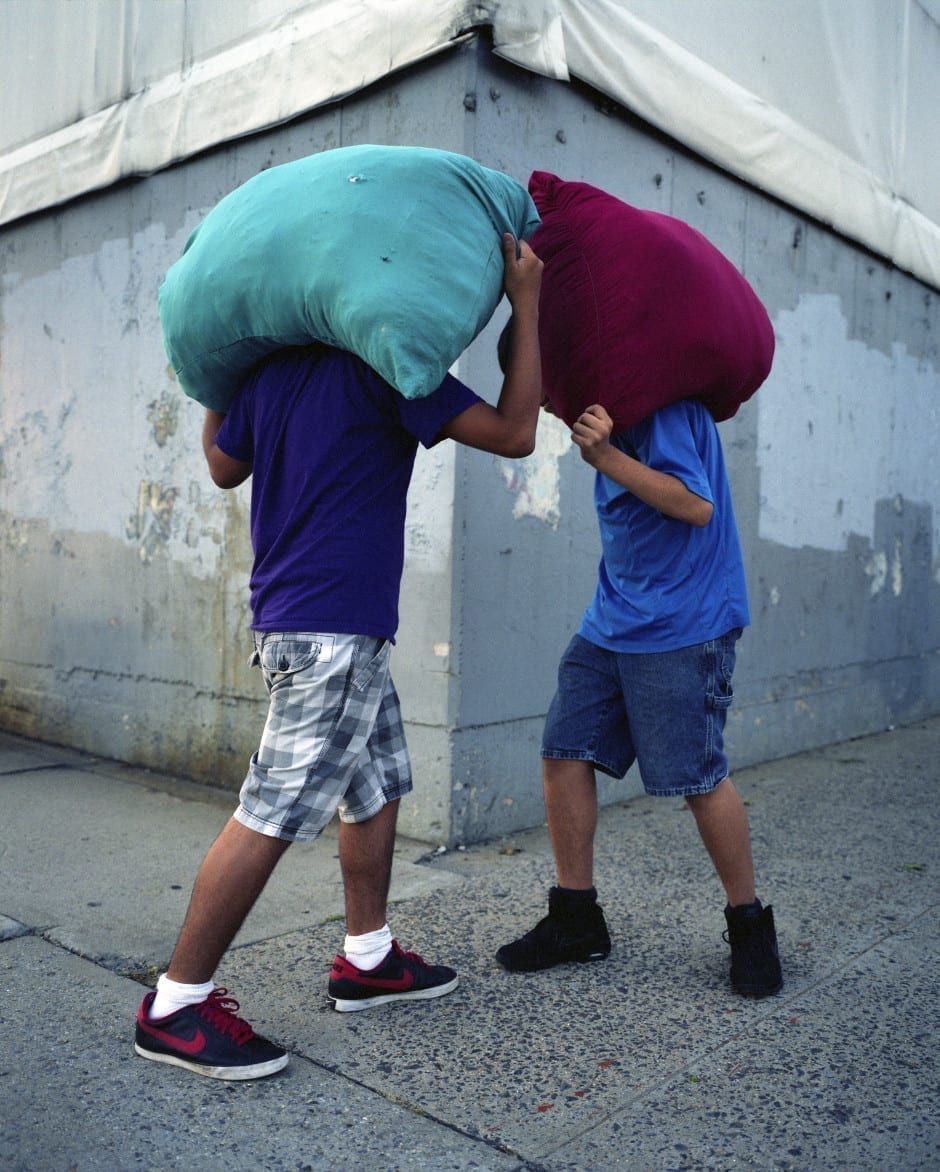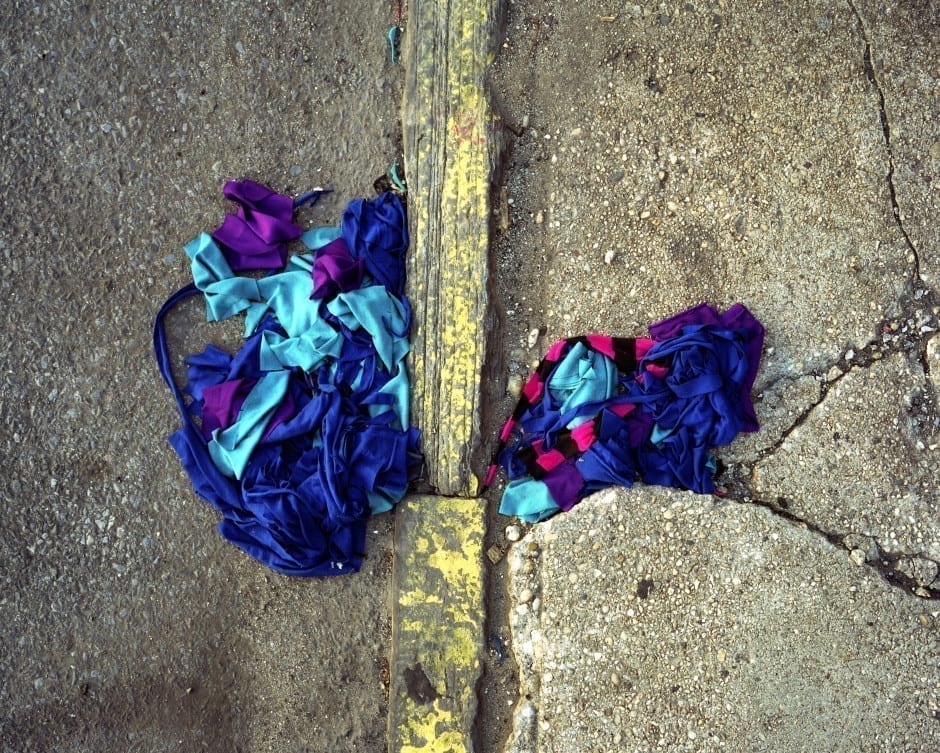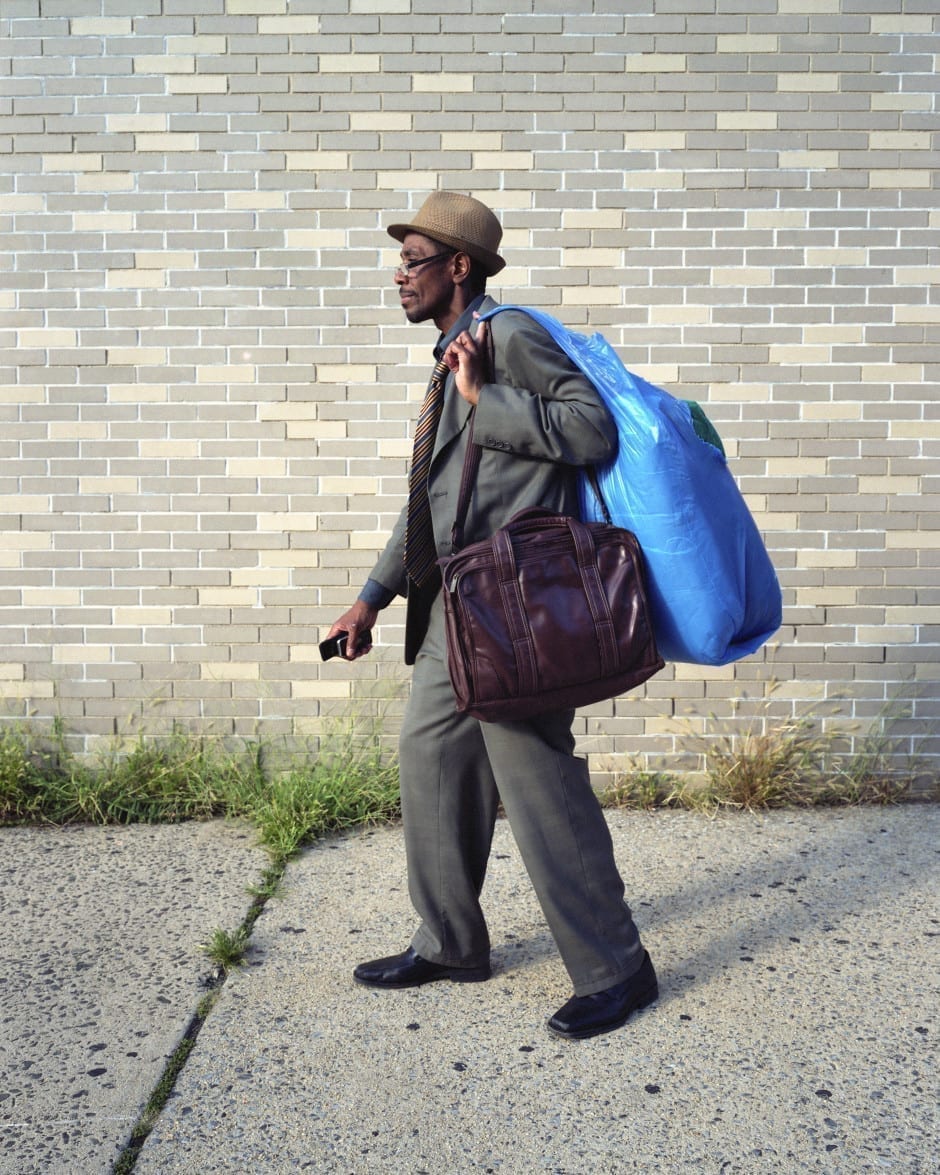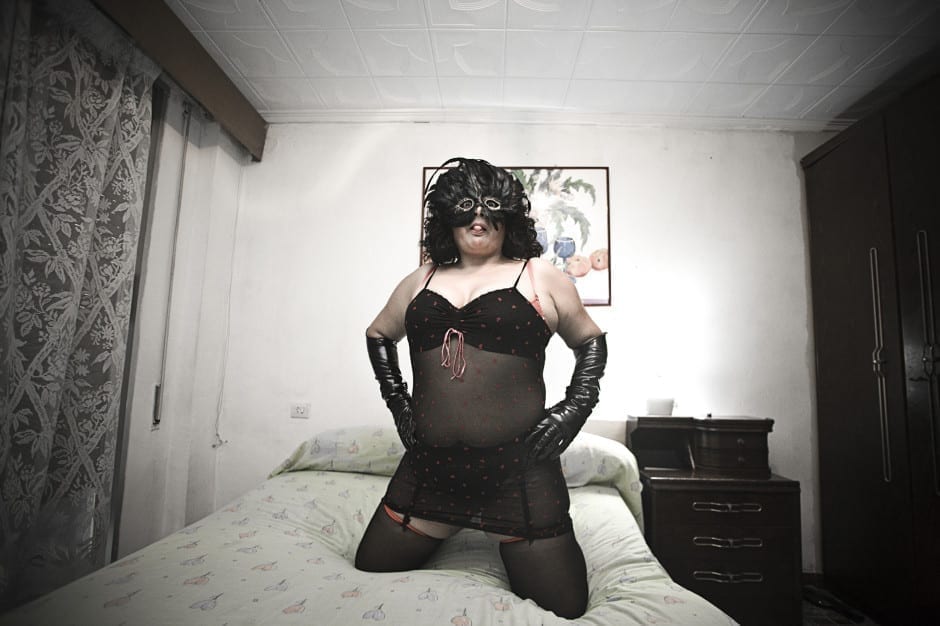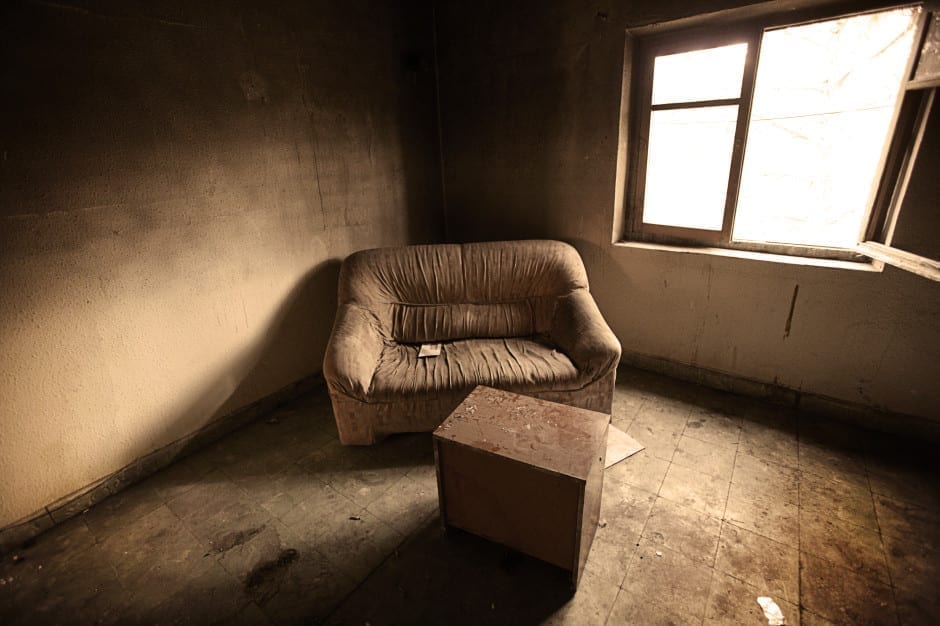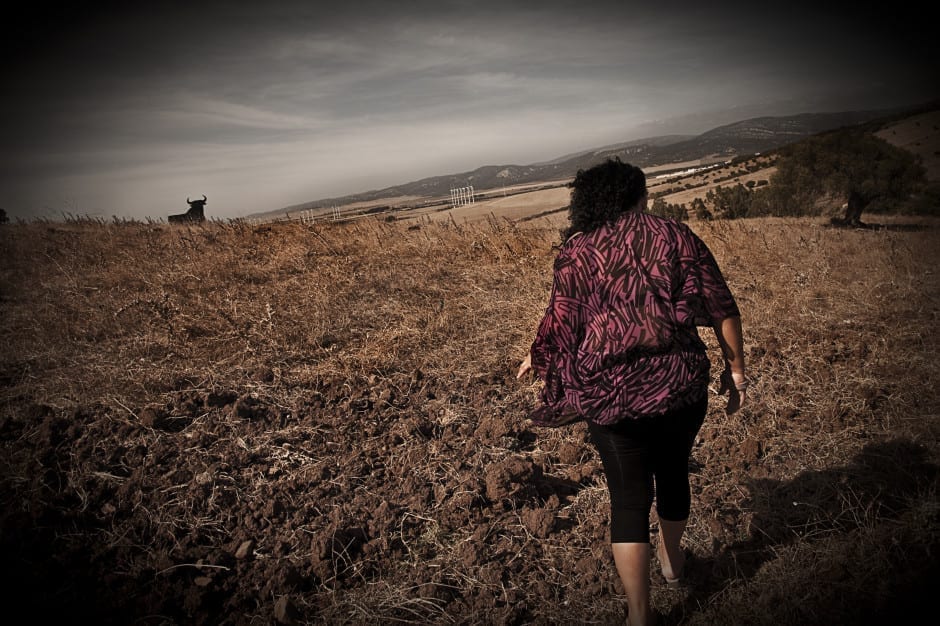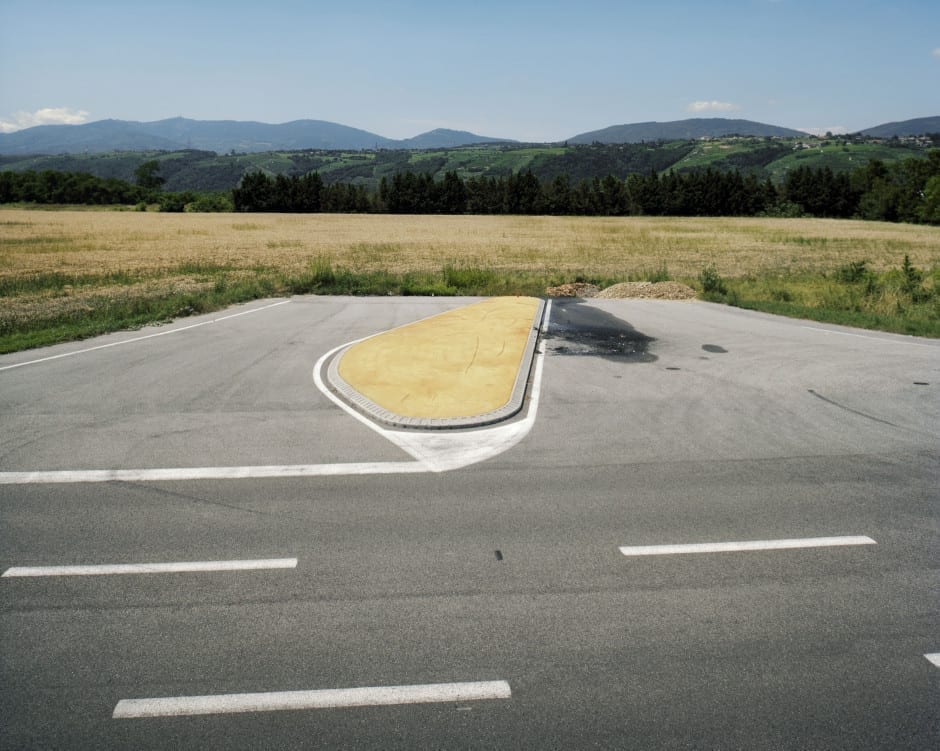“Journeying through the outskirts of their borough in the hopes of finding the river, the Laundry Sherpas of Brooklyn bear their load and navigate through the built-up landscape, confronting a lack of a natural environment in which to cleanse their daily habits. The Sherpas discard their belongings, rest and recall a bucolic past in an effort to release the weights they carry, but unless they regain the memory of the way to the river, they will have no choice but to abandon their quest in the terrain vague and return to a consumptive society,” says Erica McDonald about her project.
[bjp_ad_slot]The Laundry Sherpas of Brooklyn is her first fictive story – a documentary project based on a narrative construct that mixes fact with fiction. Yet McDonald doesn’t see her story as fiction. “I prefer to use the word fictive, in the sense that it doesn’t oppose itself to the facts. In Brooklyn, people carry their laundry to the laundromat fairly regularly,” she explains. “Only a percentage of people have cars, and I’d guess that fewer people have washers in their homes. Even though many of the people who live here are affluent, there’s something very democratic about walking to the laundromat.”
Seeing people carry their laundry through the streets in Brooklyn, McDonald was reminded of people in developing countries, who might have to walk for miles on foot to reach the bank of a river where they can wash their clothes.
McDonald first considered doing a traditional documentary piece about these Brooklyn ‘Sherpas’, talking to The New York Times about shooting it. Yet the photographer, who has been living in Brooklyn for more than eight years, wanted to use the people she photographed in a collaborative way, to emphasise the idea that they were wandering through a built-up area. In other words, she says, “I wanted them to participate in this story that came out of my imagination.”
All images from The Laundry Sherpas of Brooklyn © Erica McDonald
While the narrative construct is based on a story McDonald created, she’s not misleading the viewers. “The people I photographed are actually carrying their laundry. It’s all true – it’s all real – and that’s the documentary aspect of this work. They truly are on their way to the laundromat.” Meeting these people, McDonald explained her idea to them and asked whether they would pose for her and “engage with the concept, pretending they had been wandering for hours”.
McDonald is a documentary photographer, and The Laundry Sherpas of Brooklyn won’t change that, she explains. “I’ve shot stories about gentrification, teen pregnancy and Occupy Wall Street. It can be intense sometimes. But more than anything else, this story was really about me. I was free to create something as I wanted to do it. As a documentary photographer you have a responsibility when you’re shooting someone else’s story, and that’s as it should be. This is my story, and I got this incredible sense of joy shooting it.”
Fictitious truths
McDonald is not the only documentary photographer to experiment with fiction to tell stories that are based on fact. At a time when the photojournalism and documentary photographic industry is struggling with reduced exposure in newspapers and magazines, and when funding is increasingly hard to come by, a number of these photographers are looking at new narrative structures to attract an audience and, they admit, find an enthusiasm that might have been lacking in recent years.
Cristina de Middel used to work for a Spanish newspaper as a photojournalist until early 2011, when she had had enough. “I was disappointed with photojournalism. I’m very passionate about everything I do and when I don’t get the feedback that I expect, I’m disappointed,” she says. “I really believed, when I started being a photojournalist, that I would help change the world by taking these images. Then when I started working for a newspaper, I realised that truth is built by advertisers, political parties and corporations – at least that’s the case in Spain. When I realised I was working 12 to 14 hours a day to help someone else make money, I thought I’d rather work for my father. I went freelance and gave myself a year to do what I wanted to do.”
All images from Life and Miracles of Paula P. © Cristina de Middel
De Middel believes strongly in the power of photography. “I think there are a lot of stories that need to be told and photography is an extremely powerful tool to tell these stories.” For the Spanish photographer, it all started with Life and Miracles of Paula P. “My intention was not to do something fictionalised; instead, my intention was to do something that conveyed what I had experienced. For me, the language of reportage is not enough when compared with everything I had experienced. It started with Paula P, a prostitute. I worked with her for three years, and it wasn’t enough. I couldn’t reduce it to just a reportage about her life – her story was much more complex.”
One aspect de Middel couldn’t convey in her images was the judgment that other people have towards her and towards prostitution. “This is something you cannot add to an image, so I decided to take the book and change the narrative of the story by using verses from the Bible,” she says. De Middel also added images shot for other projects to convey the oppressive nature of other people’s views on her life. “Everything I used to tell her story is real, but by using this freedom in the approach, and by using images that didn’t belong to the project, I was telling a fuller story. I wasn’t misleading the readers, I was instead giving them more information. I was giving them a more complete experience of what I had to say. I was sharing more on so many different levels. That’s one thing photography can do when you know how to do it.”
De Middel went one step further with The Afronauts, which tells the story of Zambia’s failed space programme in 1964. The fictive narrative is based on true accounts de Middel found of that programme. “For me, it’s the most successful documentary story I’ve made in my life. If you go back to the definition of photojournalism, it’s all about telling a story with images, and in this case I’m telling a story that happened in the 1960s. There were no images available, so I had to create these images. I wasn’t deliberately playing with fiction, I was using what I could use.”
De Middel is adamant that The Afronauts is documentary photography. “If not, then what is it? Why does photography have to be either documentary or an art piece? Why do we feel the need to classify? And why is one better than the other? It’s about telling the story with images, and the story about these Afronauts is true. In a sense, I was working as a historian – rebuilding what happened and documenting it,” she says.
Reshaping reality
“A lot of photographers find that using fiction is being dishonest,” explains French photographer Samuel Bollendorff, a photojournalist and web documentary producer. “But then when you find yourself in a situation where you don’t have any avenues to express what you have to say – the press has been decimated, for example – you have to think about new narrative structures, which means you have to revolutionise the craft and look at other ways of telling your stories.”
But that doesn’t mean Bollendorff is ready to make the jump between reality and fiction, even if he has toyed with the idea. “I haven’t written fictional work yet, because I believe it requires an entirely new set of skills, but also because my interest is still in conveying the truth using reality. But it’s true that when your work isn’t linked to the news any longer, photographers and journalists should look for new narrative forms that go beyond a pure and simple report of that news. Then comes the question of defining what your role is as an author, [ensuring] your work remains credible. That’s the essential question: how do I become an author while keeping my credibility as a journalist?”
In Journey to the End of Coal, produced in 2010, Bollendorff was forced to create a narrative structure – a scenario – before he started documenting the work. “When you’re talking about creating such a structure, it means you have to reshape the information you are conveying – organise it in the right way.”
Bollendorff is now working on Burnout, a web documentary that focuses on the death of 30 French people who, since 2011, have chosen to immolate themselves – often at their workplace. “Some of these people have left messages behind; they’ve written letters,” says Bollendorff. “To try to make their voices heard, we asked a relatively famous actor to read these messages – we chose someone whose voice would be recognised so as not to mislead the audience. In a sense, we’re allowing these people to talk without pretending we were able to talk to them before they set themselves on fire.”
From Burnout © Samuel Bollendorff
For Bollendorff, crossing the boundary between reality and fiction is not an issue, “as long as we take responsibility for it and are honest about it”, he says. “When we look at my generation of photojournalists, many of them have started asking their subjects to pose for images they would include in their documentary projects. That’s reshaping reality – it’s close to being fictional. If you assume it, it’s not dishonest.”
Documentary photographer Geert van Kesteren, author of Baghdad Calling and Why Mister, Why?, hasn’t mixed fiction with reality, but he doesn’t see it as an issue either. “In my mind, with the overload of information nowadays, I am less interested in knowing about something that is or isn’t happening. Instead, what interests me, and what makes a difference between watching an item on CNN and a documentary movie or a photo series, is the author’s voice, something offering a critical look at things, a different interpretation. This interpretation enables the development of a critical look on everything I see.”
He adds: “I don’t like the use of the word fiction in this context – it’s not fiction, it’s using other tools and mainly hearing the voice of the work’s creator. But the photographer, or director or author, isn’t inventing a new story, new characters and a new plot. He is not making something up. Instead, the author wants to tell something – like I did in Iraq – and uses editing, staging and black-and-white photography to emphasize the point. I saw an American soldier in Iraq who had the same moustache and sunglasses as Saddam Hussein in one of his portraits, so I asked the soldier to pose in front of that painting. Is that fiction? I don’t think so.”
Being able to create something from her imagination is exactly what attracted McDonald to combining fictive elements to her documentary work. “By telling a story in this way, you get to put yourself first, and that’s a nice change.” she explains. “People seem to enjoy looking at such work. With my other documentary projects, I found that people would talk about single images a lot, yet with The Laundry Sherpas of Brooklyn people wanted to eat it up; they were fascinated by the idea itself.”
The literary and cinematic worlds have long accepted fiction as a strong and credible narrative form, says de Middel. “Just look at Zero Dark Thirty; we had no clear idea of what happened to Osama Bin Laden in Abbottabad, Pakistan. We had no visual reference of what had happened – until Zero Dark Thirty. Photography has an incredible potential. Freezing the image allows you to understand reality in a different way. It has much more potential than writing and the moving image. It’s the most powerful tool we have, so why not use it to tell a story? Why do we have to stick to reality? We should tell stories in different ways. We just need to redefine our craft, and now is the perfect time because there are so many platforms available for our work.”
Visit www.ericamcdonaldphoto.com, www.lademiddel.com, www.samuel-bollendorff.com and www.geertvankesteren.com.
This article was first published in BJP’s August issue, which is also available on the iPhone and iPad. Download the app now.
For more on Cristina de Middel’s view, view a recent MediaStorm interview here.

